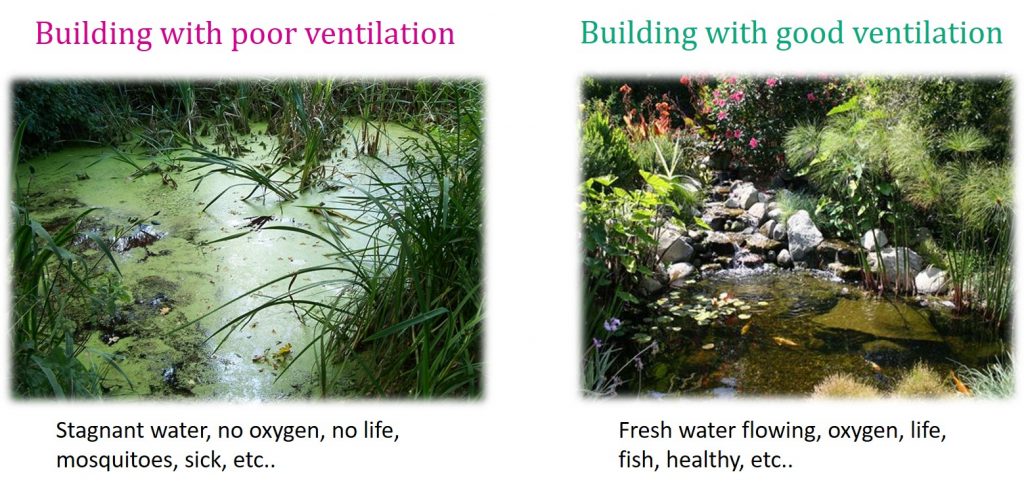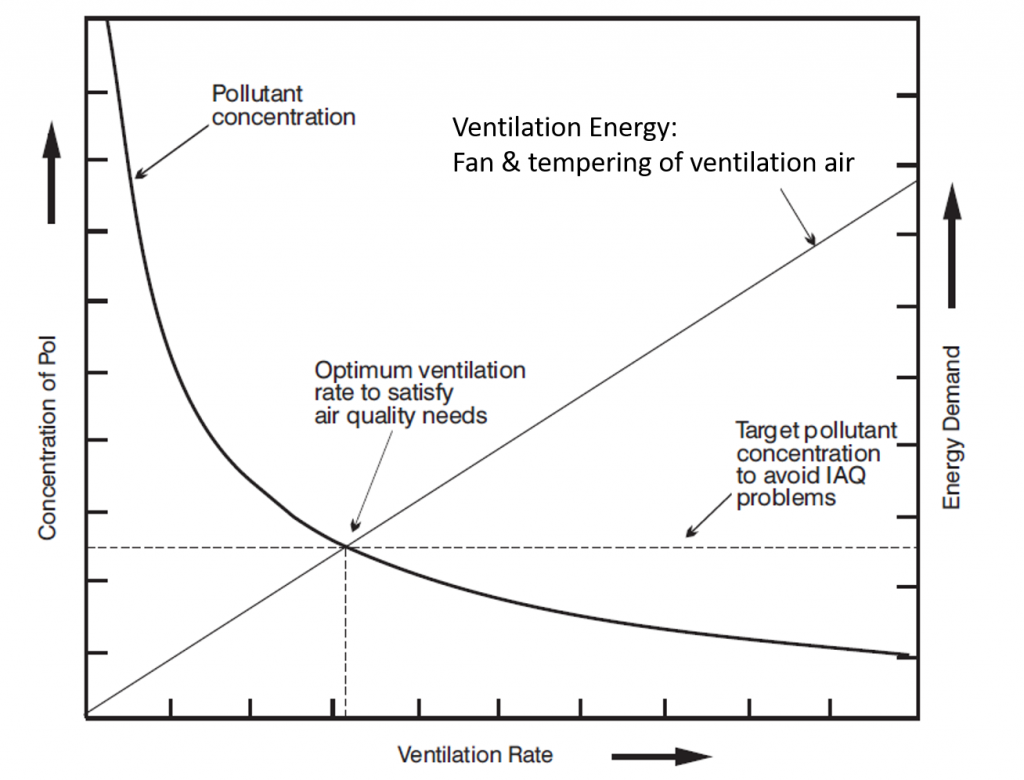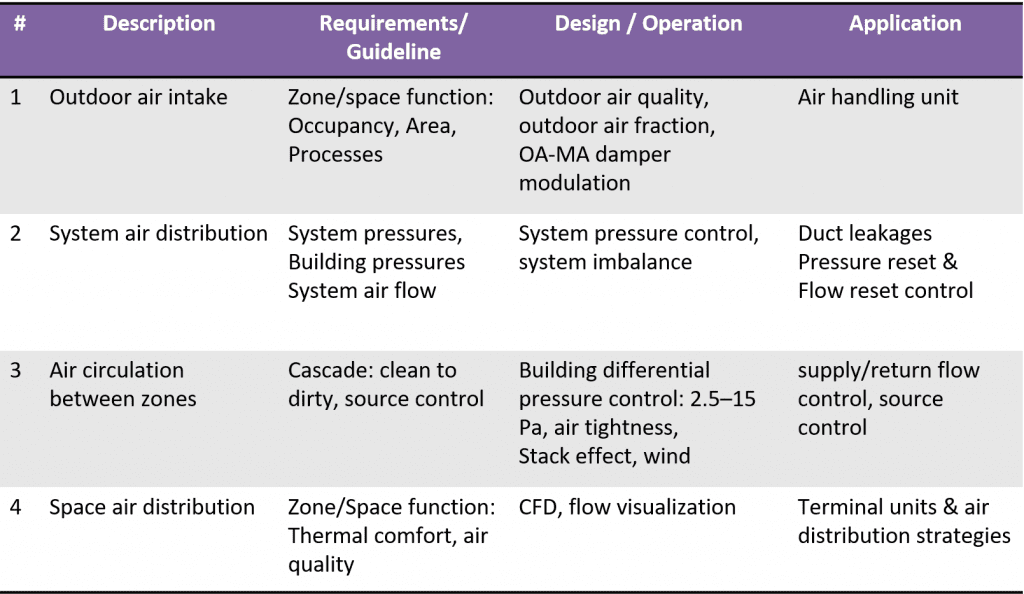Building ventilation: stinky pond analogy

Achieving adequate ventilation in buildings is becoming more relevant because: 1) buildings are becoming more disconnected from their surrounding environment, and occupants are getting more used to such disconnect, particularly in harsher cold or hot climates; 2) population growth in large cities is forcing more people to share smaller spaces bringing more opportunities for indoor pollutants to accumulate; 3) new products with new chemical formulations are present in our buildings; and 4) outdoor “fresh” air can no longer be taken for granted as outdoor pollution is also increasing due to higher traffic and polluting factories.
What are the pollutants of concern in my building? Are they avoidable? Can I eliminate some of these or at least control them at the source? How much ventilation is needed? See Figure below adapted from [1]:

Elements of Ventilation:

Space air distribution strategies:
Two general air distribution strategies can be implemented:
- Total volume air distribution
- Localized air distribution + background total volume air distribution
These strategies apply to either both ventilation and thermal comfort quality performance requirements simultaneously, or separately. For example personalized (localized) comfort systems can only address thermal comfort requirements through localized conductive or radiant devices. But these can be coupled with localized airflow devices for convective cooling and ventilation.
References:
- Liddament M. (1996). A Guide to Energy Efficient Ventilation, IEA-AIVC.